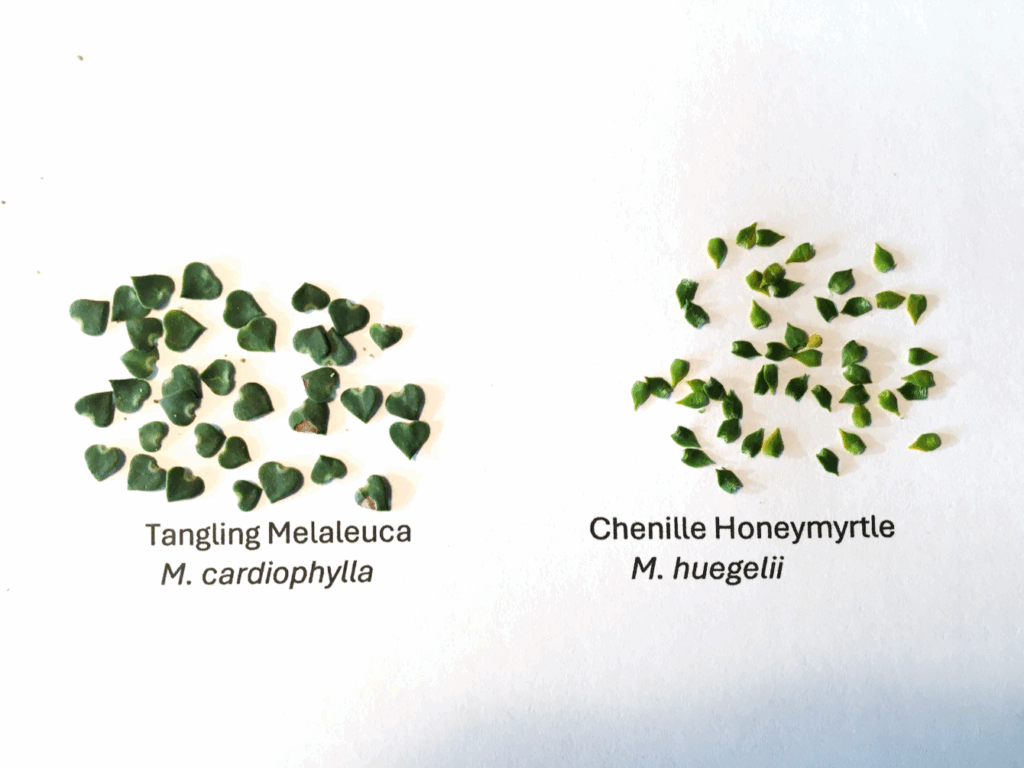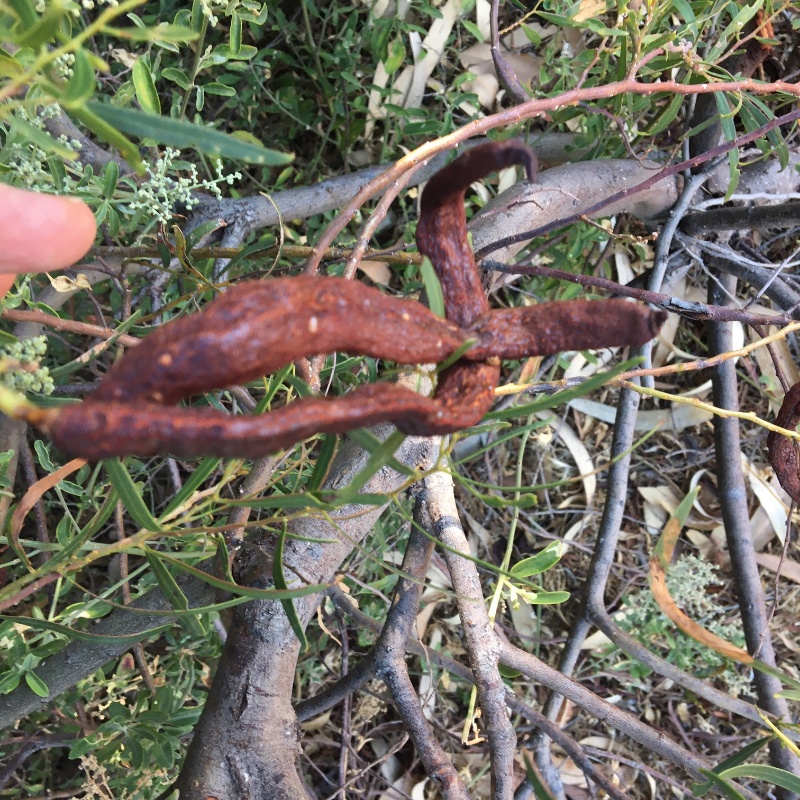Northern Suburbs Branch, 23 April 2025.
Much to our relief, the BOM radar showed that the forecasted heavy rain had passed by the time seven of us climbed the stairs to the lookout from which we had views seaward, across Marmion Marine Park and landward, across the foreshore reserve which is part of Bush Forever site 325.
This was the perfect spot for Don to explain that the variations in vegetation we could see were related to whether it was growing on the younger 6000–8000-year-old Quindalup Dunes or the older Spearwood Dunes that formed on top of the Tamala Limestone about 40,000 years ago. Before heading off, a flock of more than 30 Carnaby’s Black Cockatoos flew overhead.
Our walk along the beach was disappointing as there was very little sea wrack. The sand crabs had been very active overnight but were obviously scared of thunder as there was no sign of them. We examined the difference in the leaves of Hairy Spinifex (Spinifex hirsutus) which grows on the seaward face of foredunes and Long-leaved spinifex (S. longifolius) which naturally occurs on top or behind the foredune.
As only one person came prepared to snorkel it was decided we would instead walk along the coastal path to examine the various plant communities. At our first stop we examined the leaves of Tangling Melaleuca and soon guessed why its botanical name is M. cardiophylla. (cardio from Latinized form of Greek kardia “heart,” and phylla, meaning leaves in Greek). Further along we examined the leaves of the similar looking Chenille honeymyrtle (M. heugelii) to distinguish it from the Tangling Melaleuca.

The Chenille honeymyrtle at this location was recently added to the Honeymyrtle shrubland on limestone ridges of the Swan Coastal Pain Threatened Ecological Community list.
Along the path we examined some of the more unusual coastal plants including the Lilac Hibiscus (Alyogyne huegelii), White Spray (Logania vaginalis) and Coastal Beard-heath (Leucopogon parviflorus).

On the way back to our starting point we noticed quite a few galls that looked like oversized leaves or seed pods “growing” on Summer-scented Wattle (Acacia rostellifera).
After a shot of coffee and chocolate biscuits we headed north along the coastal path. After looking at the Matted Club-rush (Lomandra maritima) and learning about its role with the Coastal Scented wattle in the life cycle of the Graceful Sun-moth we walked to the crest of one of the old Spearwood dunes which is now capped by limestone. Here we were able to see more limestone-loving plants including Thomasia triphylla and Cockies Tongue (Templetonia retusa).
To finish our walk, we headed eastward along another path that divided the Quindalup dune from the Spearwood dune. Within thirty metres we found ourselves in the transition zone between the coastal vegetation and the Banksia Woodland. Here we came across four species of banksia – Parrot Bush (B. sessilis), Couch Honeypot (B. dallanneyi), Firewood banksia (B. menziesii) and Candlestick banksia (B. attenuata).
Probably due to the earlier rain only 11 birds were seen. We did not see either the White-winged Fairywren or Purple-backed Fairywren which are often seen. No reptiles or mammals (quenda) were recorded.

